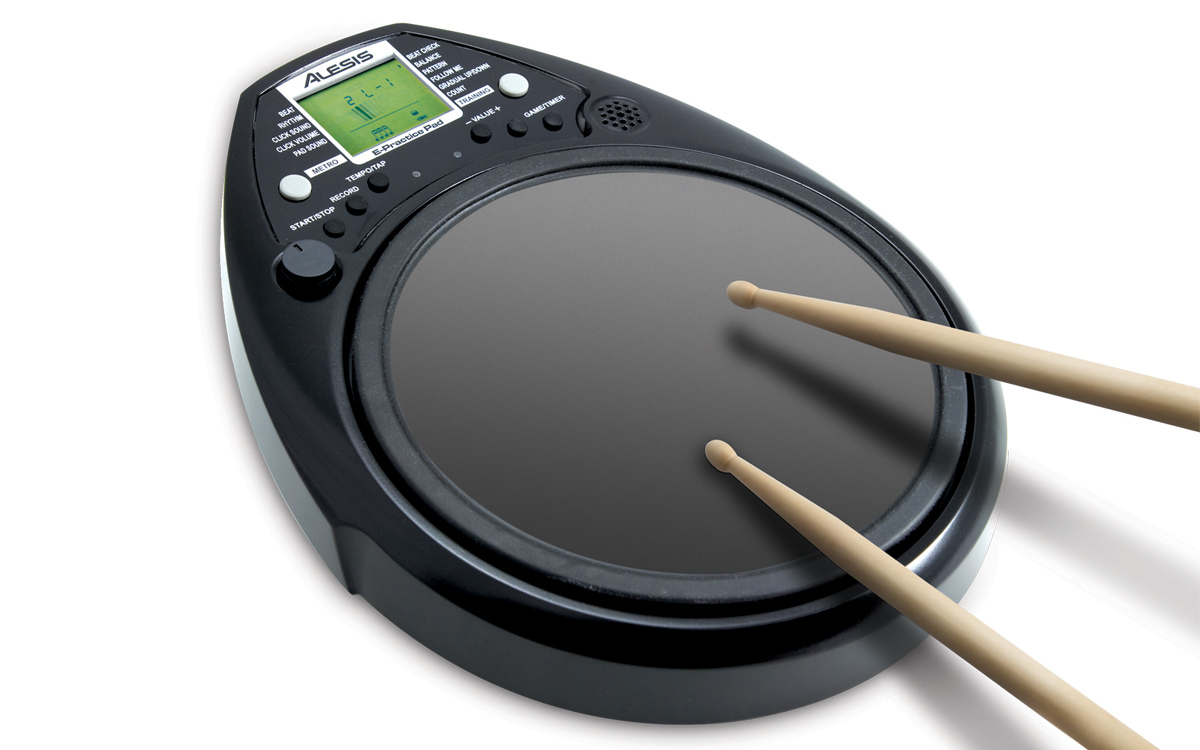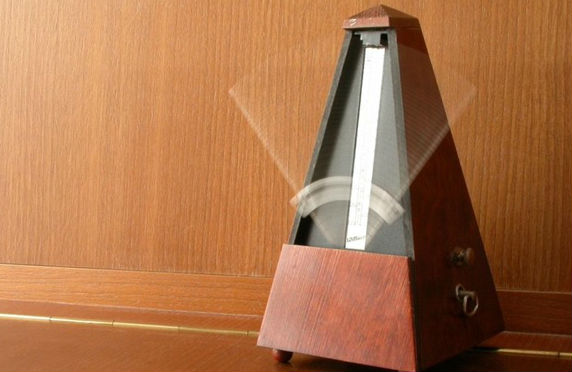Last Updated on November 2, 2021 by Danny
Ever wanted to learn how to play the drums, but don’t have a drum set? Our blog post will teach you all about what it takes and what you need for a successful drumming experience. You’ll be playing in no time! Read on now!
Drumming is one of the most popular musical instruments in the world. It’s also a great instrument for beginners because there are so many different techniques and skills that you can learn right off the bat.
How To Learn To Play Drums Without A Drum Set
This article will discuss 14 ways that anyone can use in order to learn how to play the drums.
1. Find a friend who plays the drums and asks them if they’ll teach you how to play together!
This is a great way to learn drums. Simply find a friend who can teach you and start practicing together! It’ll be easier at first because they already know how to play, so it’s just about learning from them.
This is an easy way to learn drums because you have someone who can show you how and teach you everything as they go along. They may even be able to find another friend for your lessons if the first one doesn’t know how! It also helps that there’s already another person in the lesson so it’ll feel like practicing with friends. You might want to bring some snacks or drinks though- drumming is hard work!

2. Invest in a practice pad or an electronic drum pad if you think you’ll stick with it long-term
You can’t learn drums with a practice pad or electronic drum pads, but these tools will help you get the feel of playing an actual kit. Electronic drum pads are great for learning basic sticks and hand-drumming techniques that translate to real acoustic drums, while practice pads simulate what it’s like to play on an acoustic surface without any vibration feedback from your hands slapping against the rubberized material.

If you’re just getting started, invest in a good quality pad – they run anywhere between $50-$150 USD depending on features such as whether there is adjustable sensitivity level control (if not, who knows how hard people want to hit this thing) or if it has extra input jacks so you can plug in external instruments like guitars.
The Pillo drum pad is a newer model which comes with its own set of drums and cymbals. The electronic sounds are realistic and provide an alternative to the traditional acoustic sound of drums and cymbals when you’re practicing but don’t have access to equipment. There’s even a version that includes all four sides in one kit for those who want it all or need to take their practice on the go during travel.
Priced at around $200, this affordable option provides hours upon hours of entertainment for children as well as adults looking to play without having any physical instrument nearby. It’s also available in different colors so if you like bright pink then there’s no problem!
3. Buy a pair of sticks and practice on an old towel or rug
One way students can learn how to use sticks as their makeshift drumsticks is by using things like old towels or rugs instead of expensive cymbals. This requires more skill, but you can still get really creative with it. Another option is to use a real drum set and just remove the cymbals, then place an old towel or rug on top of the drums so that when you hit them your sticks will slide across rather than making any sound.
So if you find yourself stuck in some remote location with no access to anything resembling a drum kit, don’t fret! You can always teach yourself how to play drums using makeshift methods like these two examples for Buy A Pair Of good drumsticks to use for electronic drums And Practice On An Old Towel Or Rug.
Purpose: To help people who are unable to buy expensive equipment (or even music) locate resources that allow them to learn more about their instrument without lots of investment into the learning process.
4. Pillow Practice for Your Hands

Drumming is usually done with two hands. One hand taps the high-pitched cymbals and one hand hits the bass drum, but it’s possible to simulate what these would sound like by using a pillow instead. Focusing on your right foot, use your left index finger to tap as close as you can get to where your toes are touching the ground.
The goal here is not speed or accuracy because this will never be air-tight in its execution; rather, focus on how easy it feels for that tapping motion with just one finger so that when we add more fingers, they should feel natural too.
5. Practice Arms Movement with Air Drumming
One of the most important aspects of drumming is how to create rhythmic patterns. When learning drums, you need a way to practice these patterns without spending money on an actual drum kit. This can be done by using air-drumming or hand percussion instruments such as tambourines and shakers.

With these tools, it’s easy for someone who doesn’t know how to play drums yet to still have fun with them and start developing their coordination skills right away!
Air-drums are great but they’re not always available in all situations. You can also get creative when practicing your arms movement: try tapping each arm against different parts of your body – like starting from one shoulder then tap down between your legs before tapping your other shoulder.
Practice these movements as you listen to music that’s just a little too fast or difficult for you! The goal is not always perfect execution – sometimes it’s about having fun and learning the basics so one day when drumming comes easier to you, you will be able to express yourself better in any songs!
With enough practice and time spent on air drums, hand percussion instruments, body tapping, or anything else without an actual drum set; soon all aspects of drumming will come easily. You’ll develop coordination skills quickly which can translate into playing drums with others at future sessions if drums interest you later on.
6. Practice “Ground Drumming” for Your Legs & Feet
If you don’t have access to a drum set, or if your drums are in storage and can’t be played while the weather is bad (or maybe because they’re just not that fun), there’s another way to practice without relying on pads.
What we call “ground drumming” is when you tap out rhythms with your heel, toes, hand palm, chin—pretty much any body part will work as long as it makes a noise! You might want to keep some socks nearby for this one: blood circulation becomes restricted by pressure from pressing down too hard on skin for extended periods of time. If anything but our feet start feeling tingly or numb after ground drumming, take five minutes off before continuing.
Ground Drumming is a great way to work on our coordination and rhythm without needing any additional equipment.
7. Get yourself a metronome to improve timing, especially when practicing by yourself

A metronome is a device that produces an audible clicking sound at regular intervals, typically in beats per minute. Metronomes are used by drummers and musicians to help maintain tempo and for other purposes including tuning of instruments, as a timing tool when counting musical passages or rehearsing music, and the study of animal behavior (e.g., bird song). They can also be used to demonstrate how various rhythms interact with each other.
8. Practice playing along to your favorite songs on the radio or YouTube
If you don’t have a drum set, grab some of the best drum books or other objects and play along with the song. Sing to yourself (or shout) to keep time by tapping your foot on the ground.
This activity is great for practicing your coordination skills because it forces you to focus on playing both bass and snare drums at once while also following the beat of the song. You’ll notice that this can be really challenging if you’re not used to playing an instrument!
Over time though, as long as you continue trying out new songs, eventually these tasks will feel less difficult. This variation is perfect if you want to practice in secret without having people ask why there are all sorts of noise coming from under your bedsheets.
9. Create your own beats – use household items like pots, pans, and wooden spoons as percussion instruments to create different sounds while you play drums
Use the tools in your kitchen to make a drum set. Take one pot and use it as a bass drum, two pots for snare drums (one left and one right), three pans or wooden spoons on top of each other for cymbals, and place an upside down bowl over them to create percussion sounds when hit with another object.
Find some unconventional items that can be used as instruments: empty water bottles filled with rice; metal pipes from plumbing supplies; pieces of PVC pipe cut into different lengths & wrapped tightly around speed drills.
10. Download the drum sounds onto your phone and make them loud enough to hear with headphones
Some drummers find it helpful to use a phone or computer to play the sounds of drums. You can download your favorite songs, edit them so they’re just drums, and make sure you have a good quality sound on your headphones. This way as you practice hitting the right beats for each song, you’ll be able to hear what they should sound like more clearly
This is one great example of how someone who wants to learn drums without getting their own set may still get some benefits from practicing with different patterns and rhythms that are available through music downloads.
11. Play along to the beat of the song, starting off by tapping out a few beats before you start playing
Play along to the beat of the song, starting off by tapping out a few beats before you start playing . As you tap out the rhythm, try to feel it in your body. You’ll know if you’re doing it right by how much more alive and energized (and louder) your playing will sound!
Don’t worry about not being able to play 100% of the song at first-just focus on getting through a few measures before switching up the beat pattern or tempo. Once you get comfortable with that, start making up simple drum fills as well until you can follow along without missing any beats!
12. Continue practicing as often as possible! Remember that practice makes perfect!
Continue practicing, or else you won’t be able to play your drums. As the saying goes: Practice Makes Perfect. So keep at it and eventually you’ll get there, so long as you don’t give up on yourself first.
13. Watch YouTube videos for inspiration from professionals who play drums
Watching YouTube drum lessons videos is a great way to learn how to play drums. The following video shows the drummer Brendan Buckley playing live:
This video demonstrates some of the techniques that he uses and you can see him improvising with drumming patterns which is something it’s important to be able to do when learning this instrument.
14. Play along to popular songs that have a drumbeat so you can get used to playing at different beats per minute (BPM)
One way to practice drumming without an actual kit is to play along with songs that have a strong drum beat. This will teach you different ways of playing the same song, and it’s one of the best ways for beginners to learn how drums work.
Start by choosing four or five songs that are popular enough for everyone in your household to know (you don’t want them thinking it sounds weird). Start off slow so they can keep up – if their foot starts tapping, then you’re probably doing something right!
Once you get those down pat, try switching between two or three BPMs while keeping on tempo. It might be difficult at first but as long as there’s no variation within a single measure, this shouldn’t prove too difficult. Once you’re comfortable with this, try switching between measures or even adding drum fills to the mix!
Don’t forget that if your friends are musically inclined as well, they can help out by playing an instrument (or singing) so you don’t have to play alone and bored. It’s less embarrassing when there’s a group of people around anyways – right?
Conclusion:
It doesn’t matter how old you are, where you live in the world, or what type of background music is popular nearby – anyone can learn drums without a kit! This might be one way for some people who want to keep it simple yet still enjoy themselves at 65+ age.